#Smart Glass Industry Trends
Explore tagged Tumblr posts
Text

Car Transport Benefits from Smart Glass Innovations
Smart glass technologies are transforming the automotive landscape, revolutionizing how we experience our vehicles. This blog post explores the latest advancements in car transporting and how smart glass is enhancing safety, comfort, and energy efficiency.
From adjustable tinting to improved privacy features, smart glass is not just a trend; it's the future of automotive design. Discover how these innovations are set to change the way we think about responsible car transporters and what that means for drivers and passengers alike.
Smart Glass Technologies
Smart glass technologies have revolutionized the automotive industry, offering enhanced comfort, safety, and functionality for drivers and passengers alike. These innovative solutions have a significant impact on the driving experience and are becoming increasingly prevalent in modern vehicles.
Electrochromic Windows
Electrochromic windows represent a major advancement in automotive glass technology. These windows have the ability to change their tint level in response to electrical stimuli, allowing for dynamic control of light transmission and heat entering the vehicle. This technology has an influence on both comfort and energy efficiency.
For nationwide car transport services, electrochromic windows offer several benefits. They help maintain optimal interior temperatures during long-distance shipping, reducing the need for climate control systems and potentially lowering fuel consumption. This has a positive impact on the overall efficiency of auto transport services in California and across the country.
Heads-Up Display Integration
The integration of heads-up displays (HUDs) into vehicle windshields has transformed the way drivers interact with their vehicles. HUDs project essential information directly onto the windshield, allowing drivers to access critical data without taking their eyes off the road. This technology has a significant impact on safety and convenience.
San Jose auto shipping and other transport services, HUD-equipped vehicles require special handling to protect the sensitive display components. Transport companies are adapting their practices to ensure these advanced windshields are adequately protected during transit, maintaining the integrity of the HUD systems.
UV and Infrared Protection
Advanced UV and infrared protection in automotive glass has become a standard feature in many modern vehicles. This technology helps to block harmful rays, reducing interior heat buildup and protecting occupants and vehicle interiors from sun damage. The implementation of UV and infrared protection has an influence on both comfort and long-term vehicle preservation.
For nationwide vehicle driveaway services, this technology has implications for vehicle care during transport. The enhanced protection offered by these smart glass solutions helps to maintain the condition of vehicle interiors during long-distance shipping, particularly in regions with intense sunlight. This has a positive impact on the quality of service provided by auto transport companies, ensuring vehicles arrive at their destinations with minimal sun-related wear and tear.
The adoption of these smart glass technologies in the automotive industry has transformed the driving experience and has implications for nationwide car transport services. As vehicles become more technologically advanced, transport companies are adapting their practices to accommodate these innovations, ensuring the safe and efficient shipping of modern vehicles equipped with smart glass features.
Enhanced Aerodynamics and Efficiency
The automotive industry has made significant strides in improving vehicle aerodynamics and efficiency. These advancements have a substantial impact on nationwide car transport, as they influence fuel consumption, vehicle performance, and overall transportation costs. Modern vehicles incorporate various features designed to enhance aerodynamics and boost efficiency, contributing to a more sustainable and cost-effective transportation sector.
Active Grille Shutters
Active grille shutters represent a significant innovation in vehicle aerodynamics. These systems automatically adjust the airflow through the vehicle's front grille based on driving conditions. When less engine cooling is required, the shutters close, reducing drag and improving fuel efficiency. This technology has an influence on the overall performance of vehicles during long-distance transport.
For nationwide vehicle driveaway services, active grille shutters offer benefits in terms of fuel economy. During highway driving, which is common in car transport scenarios, closed shutters can significantly reduce air resistance. This has a positive impact on the efficiency of auto transport services in California and across the country, potentially lowering fuel costs and emissions associated with long-distance vehicle shipping.
Underbody Panels
Underbody panels have become a standard feature in many modern vehicles, serving to smooth out the airflow beneath the car. These panels cover the uneven surfaces of the vehicle's underside, reducing turbulence and drag. The implementation of underbody panels has a significant impact on overall vehicle aerodynamics and fuel efficiency.
When it comes to transporting your car safely and efficiently, Lucky Star Auto Transport Service stands out as a trusted choice. This service offers reliable solutions tailored to meet your specific needs, whether you're moving across the country or just a short distance.
Visit https://luckystarautotransport.com and explore the key features and benefits that Lucky Star Auto Transport Service will provide, helping you understand why it’s a top option for car shipping. Get ready to discover how this service can make your auto transport experience smooth and hassle-free.
youtube
4 notes
·
View notes
Text

Nationwide Car Transport Innovations: Must-Have Gadgets for Modern Drivers
The automotive industry is experiencing a rapid transformation, driven by technological advancements reshaping the driving experience. As vehicles become increasingly sophisticated, nationwide car transport services adapt to accommodate these changes. From artificial intelligence to advanced materials, a new wave of innovations is revolutionizing how people interact with their vehicles and how they are transported across the country.
This article explores the cutting-edge gadgets and technologies that are becoming essential for modern drivers. It delves into the role of artificial intelligence in vehicles, cybersecurity measures for connected cars, and the use of advanced materials for lightweight construction.
The discussion also covers alternative fuel innovations, smart glass technologies, enhanced aerodynamics, and next-generation user interfaces.
These developments are not only changing the driving experience but also influencing how auto transport services in California and across the nation operate, making it crucial for car enthusiasts and industry professionals to stay informed about these transformative trends.
Artificial Intelligence in Vehicles
Artificial Intelligence (AI) has become a driving force in the automotive industry, transforming the way vehicles operate and interact with their occupants. This technology has a significant impact on nationwide car transport and is reshaping the driving experience for modern motorists.
Predictive Maintenance
AI-powered predictive maintenance systems are revolutionizing vehicle upkeep. These advanced systems continuously monitor various components of a vehicle, analyzing data to predict potential issues before they occur. By utilizing machine learning algorithms, these systems can detect patterns and anomalies in vehicle performance, allowing for proactive maintenance scheduling.
This technology has a substantial impact on nationwide vehicle driveaway services. It enables transport companies to minimize unexpected breakdowns during long-distance trips, ensuring more reliable and efficient car shipping.
For instance, AI can alert drivers or fleet managers about the need for an oil change or tire replacement well in advance, reducing the risk of roadside emergencies and delays in auto transport services in California and across the country.
Personalized Driving Experience
AI is also enhancing the personalized driving experience, making vehicles more adaptive to individual preferences and habits. Advanced AI systems can learn from a driver's behavior, adjusting various vehicle settings automatically. This includes customizing seat positions, climate control, and even driving modes based on recognized patterns.
For those using san jose auto shipping services, this personalization can extend to the entire transport process. AI can optimize routes, suggest ideal pickup and drop-off times, and even adjust vehicle settings for long-distance transport, ensuring cars arrive at their destination in optimal condition.
AI-Powered Voice Assistants
Voice-activated AI assistants are becoming increasingly sophisticated in modern vehicles. These systems go beyond simple commands, offering a range of services that enhance both safety and convenience. Drivers can use voice commands to control navigation, make phone calls, adjust vehicle settings, and even access real-time traffic information.
In the context of auto transport services in California and nationwide, these AI assistants can provide valuable information about the shipping process. They can offer updates on vehicle location, and estimated arrival times, and even suggest optimal routes for transport vehicles, contributing to more efficient and transparent car shipping experiences.
Integrating AI in vehicles is not just a luxury but a necessity for modern drivers and transport services alike. As reliable nationwide car transportation reviews often highlight, the incorporation of AI technologies leads to safer, more efficient, and more personalized experiences in both personal vehicle use and auto transport services. For those interested in learning more about how AI is shaping the future of automotive technology and transport services, it is recommended to visit this link on luckystarautotransport.com, where comprehensive information about these advancements is available.
youtube
3 notes
·
View notes
Text

Nationwide Car Transport Innovations: Must-Have Gadgets for Modern Drivers
The automotive industry is experiencing a rapid transformation, driven by technological advancements that are reshaping the driving experience. As vehicles become increasingly sophisticated, nationwide car transport services are adapting to accommodate these changes. Imagine a drive so smooth, that you almost forget you're on the road—learn how car transport cost per mile can make your transporting experience a breeze!
From artificial intelligence to advanced materials, a new wave of innovations is revolutionizing the way people interact with their vehicles and how they are transported across the country.
This article explores the cutting-edge gadgets and technologies that are becoming essential for modern drivers. It delves into the role of artificial intelligence in vehicles, cybersecurity measures for connected cars, and the use of advanced materials for lightweight construction. The discussion also covers alternative fuel innovations, smart glass technologies, enhanced aerodynamics, and next-generation user interfaces. These developments are not only changing the driving experience but also influencing how auto transport services in California and across the nation operate, making it crucial for car enthusiasts and industry professionals to stay informed about these transformative trends.
Artificial Intelligence in Vehicles
Artificial Intelligence (AI) has become a driving force in the automotive industry, transforming the way vehicles operate and interact with their occupants. This technology has a significant impact on nationwide car transport and is reshaping the driving experience for modern motorists.
Predictive Maintenance
AI-powered predictive maintenance systems are revolutionizing vehicle upkeep. These advanced systems continuously monitor various components of a vehicle, analyzing data to predict potential issues before they occur. By utilizing machine learning algorithms, these systems can detect patterns and anomalies in vehicle performance, allowing for proactive maintenance scheduling.
This technology has a substantial impact on nationwide vehicle driveaway services. It enables transport companies to minimize unexpected breakdowns during long-distance trips, ensuring more reliable and efficient car shipping. For instance, AI can alert drivers or fleet managers about the need for an oil change or tire replacement well in advance, reducing the risk of roadside emergencies and delays in auto transport services in California and across the country.
Personalized Driving Experience
AI is also enhancing the personalized driving experience, making vehicles more adaptive to individual preferences and habits. Advanced AI systems can learn from a driver's behavior, adjusting various vehicle settings automatically. This includes customizing seat positions, climate control, and even driving modes based on recognized patterns.
San Jose auto shipping services transform transport innovations with essential gadgets for modern drivers that will make your shipping journey easier and more fun. GPS Tracking systems can optimize routes, suggest ideal pickup and drop-off times, and even adjust vehicle settings for long-distance transport, ensuring cars arrive at their destination in optimal condition.
AI-Powered Voice Assistants
Voice-activated AI assistants are becoming increasingly sophisticated in modern vehicles. These systems go beyond simple commands, offering a range of services that enhance both safety and convenience. Drivers can use voice commands to control navigation, make phone calls, adjust vehicle settings, and even access real-time traffic information.
In the context of auto transport services in California and nationwide, these AI assistants can provide valuable information about the shipping process. They can offer updates on vehicle location, estimated arrival times, and even suggest optimal routes for transport vehicles, contributing to more efficient and transparent car shipping experiences.
The integration of AI in vehicles is not just a luxury but a necessity for modern drivers and transport services alike. As reliable nationwide car transportation reviews often highlight, the incorporation of AI technologies leads to safer, more efficient, and more personalized experiences in both personal vehicle use and auto transport services.
For those interested in learning more about how AI is shaping the future of automotive technology and transport services, it is recommended to read the full details at www.luckystarautotransport.com, where comprehensive information about these advancements is available.
youtube
3 notes
·
View notes
Text
What's new in tech 2024?

In 2024, the tech landscape is evolving rapidly, ushering in groundbreaking innovations and transformative advancements across various industries. From artificial intelligence and machine learning to augmented reality and quantum computing, the pace of technological innovation has never been faster. Let's explore some of the key trends and developments shaping the tech industry in 2024.
Artificial Intelligence (AI) Continues to Dominate:
AI is at the forefront of technological advancements, driving innovation in numerous sectors such as healthcare, finance, retail, and manufacturing. In 2024, AI is becoming more sophisticated, with advanced algorithms and deep learning models powering intelligent automation, predictive analytics, and personalized experiences.
Quantum Computing Breakthroughs:
Quantum computing is poised to revolutionize computing power and capabilities, enabling complex calculations and solving problems that are currently infeasible for classical computers. In 2024, we are witnessing significant progress in quantum computing research, with the development of more stable qubits, scalable quantum systems, and practical applications in optimization, cryptography, and drug discovery.
Augmented Reality (AR) and Virtual Reality (VR) Experiences:
AR and VR technologies are transforming how we interact with digital content and the physical world. In 2024, we are seeing immersive AR and VR experiences becoming increasingly mainstream, with applications in gaming, entertainment, education, training, and remote collaboration. Enhanced AR glasses, immersive VR headsets, and spatial computing platforms are driving innovation in this space.
5G Connectivity and Edge Computing:
The rollout of 5G networks is enabling ultra-fast, low-latency connectivity, paving the way for a new era of interconnected devices and services. In 2024, 5G adoption is accelerating, powering IoT ecosystems, autonomous vehicles, smart cities, and real-time streaming experiences. Edge computing, coupled with 5G, is decentralizing computing resources and enabling faster data processing at the network edge.
Sustainable and Green Technologies:
As environmental concerns continue to mount, the tech industry is focusing on developing sustainable and eco-friendly solutions. In 2024, we are witnessing the rise of green technologies, including renewable energy sources, energy-efficient devices, carbon capture technologies, and eco-friendly manufacturing processes. Tech companies are increasingly prioritizing sustainability in their product development and operations.
Cybersecurity and Privacy Measures:
With the growing threat of cyberattacks and data breaches, cybersecurity remains a top priority for organizations and individuals alike. In 2024, there is a heightened focus on enhancing cybersecurity measures, including advanced encryption techniques, threat intelligence, zero-trust architectures, and privacy-enhancing technologies. The adoption of robust cybersecurity practices is essential to safeguarding sensitive data and protecting digital assets.
In conclusion, 2024 promises to be an exciting year for technology, with groundbreaking innovations shaping the future of industries and society as a whole. From AI and quantum computing to AR/VR experiences and sustainable technologies, the tech landscape is evolving rapidly, offering new opportunities and challenges for businesses, consumers, and policymakers alike. Stay tuned as we continue to explore and embrace the latest tech trends in the years to come. Get more interesting updates regard software development solutions.
4 notes
·
View notes
Text
Trending Photo Frame Ideas in 2024
Explore futuristic holographic frames, minimalist magnetic displays, and customizable LED panels. In 2024, photo frames are not just about displaying memories; they are an integral part of interior décor and personal expression.

As technology advances and design trends evolve, photo frames have transformed into creative statement pieces. From digital frames to artisanal designs, here are ten trending photo frame ideas captivating attention in 2024:
Smart Digital Frames: Smart digital frames have become ubiquitous in 2024, offering high-resolution displays and seamless connectivity. These frames allow users to upload and display photos effortlessly from their smartphones or cloud storage. With features like motion sensors and voice control, they blend seamlessly into modern homes, providing a dynamic way to showcase memories.
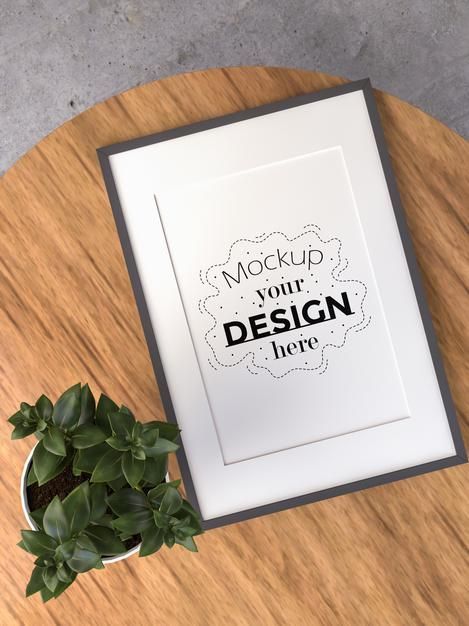
Floating Acrylic Frames: Minimalistic and chic, floating acrylic frames have gained popularity as a modern alternative to traditional frames. The clear acrylic material gives the illusion that the photo is floating within the frame, creating a sleek and contemporary look. These frames are versatile, fitting well in any décor style, from industrial lofts to minimalist apartments.

Vintage-Inspired Brass Frames: Drawing inspiration from the past, brass frames have made a comeback in 2024 with their timeless elegance and warmth. These frames feature intricate detailing and a lustrous finish, adding a touch of sophistication to any space. Whether displaying black-and-white family portraits or sepia-toned landscapes, vintage-inspired brass frames evoke nostalgia and charm.

Multi-Photo Collage Frames: In the age of social media, multi-photo collage frames have become a popular way to curate and display digital memories. These frames come in various configurations, allowing users to create custom collages of their favorite moments. Whether arranged in a grid or a whimsical pattern, multi-photo collage frames offer a dynamic and personalized way to showcase a collection of photographs.
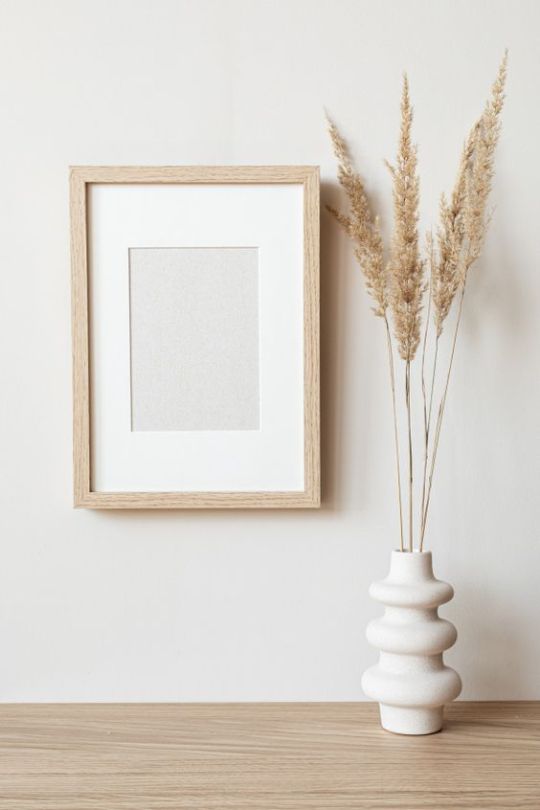
Natural Wood Frames with Live Edge: Embracing the beauty of imperfection, natural wood frames with live edges have emerged as a trend in 2024. These frames retain the raw, organic shape of the wood, showcasing its natural knots, grains, and textures. Each frame is unique, adding character and warmth to any space. Whether hung on a gallery wall or displayed on a mantel, natural wood frames with live edges bring a touch of the outdoors inside.

Interactive LED Frames: Blurring the line between art and technology, interactive LED frames have captured attention in 2024 with their mesmerizing displays. These frames feature built-in LED lights that illuminate the photo, creating a captivating visual experience. With customizable light settings and animations, users can create mood-enhancing displays that change according to the time of day or their preferences.

Geometric Metal Frames: Geometric metal frames have become a favorite among design enthusiasts in 2024 for their contemporary appeal and geometric patterns. These frames come in various shapes, such as hexagons, triangles, and circles, adding visual interest to any wall. Made from sleek metal materials like brass, copper, or stainless steel, geometric frames create a striking contrast against the photographs they hold, making them stand out as modern art pieces.
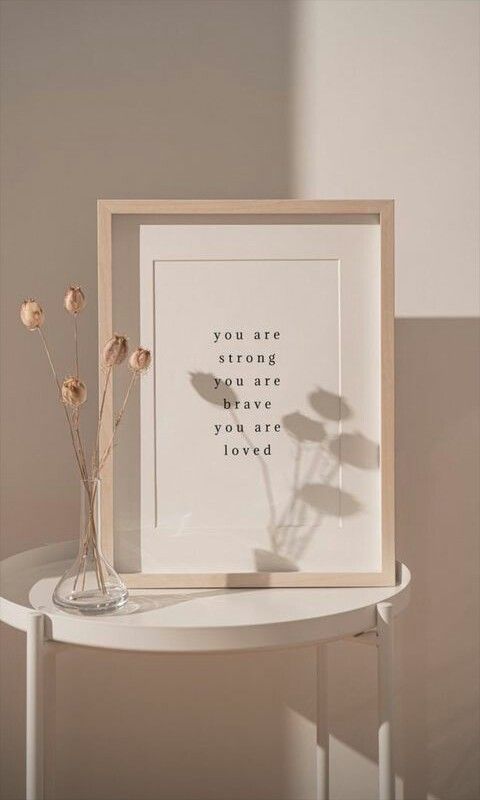
Botanical Press Frames: Inspired by nature, botanical press frames have emerged as a trend in 2024, bringing the beauty of the outdoors into interior spaces. These frames feature delicate botanical specimens, such as flowers, leaves, and ferns, preserved and arranged between glass panels. Each frame is a work of art, capturing the ephemeral beauty of nature and adding a touch of serenity to any room.

Customizable Magnetic Frames: Offering flexibility and versatility, customizable magnetic frames have become popular in 2024 for their ease of use and adaptability. These frames consist of magnetic panels that allow users to arrange and rearrange their photos effortlessly. Whether creating a gallery wall or a rotating display, customizable magnetic frames enable users to showcase their memories in a dynamic and personalized way.

Artisanal Clay Frames: Handcrafted with care and attention to detail, artisanal clay frames have gained popularity in 2024 for their rustic charm and tactile appeal. These frames are made from natural clay materials, molded and glazed by skilled artisans. Each frame bears the marks of its maker, adding a sense of authenticity and craftsmanship to any photograph it holds. Whether displayed on a shelf or hung on a wall, artisanal clay frames bring a touch of handmade beauty to any space.

In conclusion, photo frames in 2024 are not merely utilitarian objects; they are expressions of personal style and creativity. From smart digital frames to artisanal clay designs, there is a diverse range of options available to suit every taste and decor.

Whether showcasing cherished memories or adding a decorative touch to a room, these trending photo frame ideas offer endless possibilities for creativity and self-expression.
#3d printing#branding#3d sign#print on demand#acrylic photo frame#photo frame#photo friday#photography#frame
2 notes
·
View notes
Text
Curtain Wall: A Transparent Revolution in Architecture

In the dynamic realm of architecture, the curtain wall stands as a testament to the evolving nature of design and construction. This article delves into the intricacies of curtain walls, exploring their history, types, materials, advantages, challenges, and future trends.
History of Curtain Walls
Curtain walls have a rich history, finding early use in ancient structures. Over the years, they have undergone significant evolution, adapting to technological advancements and design preferences.
Types of Curtain Walls
There are various types of curtain walls, each with its unique characteristics. Stick-built curtain walls, unitized curtain walls, and spider glass curtain walls are among the popular choices in modern construction.
Materials Used in Curtain Walls
The choice of materials plays a pivotal role in the performance and aesthetics of curtain walls. Glass, aluminum, and steel are commonly used materials, each offering distinct advantages.
Advantages of Curtain Walls
Beyond their aesthetic appeal, curtain walls contribute to energy efficiency and the integration of natural light. These factors make them a preferred choice in contemporary architecture.
Challenges and Considerations
While curtain walls offer numerous benefits, challenges such as maintenance, insulation concerns, and weather resistance need careful consideration during the design and installation process.
Sustainable Curtain Walls
As the world gravitates towards sustainability, curtain walls are also adapting. Green building practices and the use of eco-friendly materials are transforming the landscape of curtain wall design.
Innovative Designs
The future of curtain walls lies in innovation. Customization trends and integration with smart technologies are shaping the way architects approach building facades.
Notable Buildings with Curtain Walls
Numerous iconic structures around the world showcase the versatility and beauty of curtain walls. Examples from different regions highlight the global impact of this architectural feature.
Installation Process
For those considering curtain walls in their projects, a step-by-step guide and professional recommendations provide insights into the meticulous installation process.
Cost Considerations
Understanding the factors influencing costs and the potential long-term savings is crucial for individuals or organizations contemplating the use of curtain walls in construction projects.
Future Trends in Curtain Wall Technology
As technology continues to advance, the curtain wall industry is not exempt. This section explores the latest technological trends and predictions for the future of curtain wall design.
Case Studies
Examining successful implementations and lessons learned from past projects provides valuable insights into the practical aspects of working with curtain walls.
Common Misconceptions
Addressing common myths and clarifying facts about curtain walls helps dispel misinformation, fostering a better understanding of this architectural element.
Conclusion
In conclusion, the curtain wall represents a transparent revolution in architecture, blending aesthetics with functionality. Understanding its history, types, materials, advantages, and challenges is essential for anyone involved in the design and construction industry.
FAQs
Are curtain walls only used for aesthetic purposes?
Curtain walls offer both aesthetic appeal and practical advantages such as energy efficiency and natural light integration.
What materials are commonly used in curtain wall construction?
Glass, aluminum, and steel are the primary materials used in curtain walls, each offering unique benefits.
How do curtain walls contribute to sustainability?
Sustainable curtain walls embrace green building practices and utilize eco-friendly materials.
What are the maintenance requirements for curtain walls?
Regular maintenance is crucial for curtain walls, addressing issues like cleaning, inspections, and repairs.
Can curtain walls be customized to suit specific design preferences?
Yes, innovative designs and customization trends allow architects to tailor curtain walls to unique project requirements.
#curtain wall#curtain walls#aluminium curtain wall#curtain manufacturers london#curtain walling london#aluminium curtain walling london#curtain wall glazing companies
2 notes
·
View notes
Text
The Evolution of Luxury Windows and Doors: Tracing Aesthetic Journeys Through Time
Luxury windows and doors stand as timeless elements in architectural design, offering a seamless blend of functionality and aesthetics.
This journey through the evolution of these essential features unveils the remarkable shifts and innovations that have shaped the industry from its early roots to the contemporary designs we admire today.
Historical Overview:
Early Windows and Doors: In the annals of architectural history, the introduction of glass marked a pivotal moment in window and door design. From the influence of Gothic and Renaissance styles emerged intricate details that defined the essence of luxury.
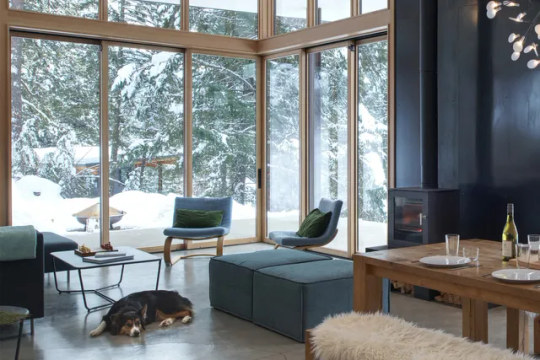
The Victorian Era:
The Victorian era witnessed a flourish of ornate designs and the introduction of stained glass, transforming windows and doors into true works of art that reflected the opulence of the times.
Art Deco and Modernism: As the 20th century dawned, the Art Deco and Modernism movements brought forth streamlined designs and geometric shapes, leaving an indelible mark on luxury design aesthetics.
Mid-20th Century to Contemporary Trends:
Post-War Minimalism: In the post-war era, minimalism took center stage, with an emphasis on simplicity and clean lines. Sliding glass doors became a hallmark of this period, revolutionizing both form and function.
Sustainable Design Movement:
The latter half of the 20th century witnessed a shift towards sustainable design, with the integration of eco-friendly materials and energy-efficient solutions, aligning luxury with environmental consciousness.
Technological Advancements:
As we entered the digital age, luxury windows and doors evolved with the integration of smart technologies. Homeowners could now enjoy automated features and control their environments remotely, setting new standards for modern living.
Key Innovations:
Materials Revolution: Luxury underwent a materials revolution, introducing aluminum and fiberglass into the design lexicon. These materials not only enhanced durability but also allowed for innovative aesthetic expressions.
Security Enhancements:
Locking systems evolved to meet the demands of security-conscious homeowners, and the incorporation of impact-resistant glass became a standard, offering both peace of mind and cutting-edge design.
Case Studies:
Frank Lloyd Wright's Architectural Contributions: The architectural genius of Frank Lloyd Wright left an indelible mark on luxury design. His innovative use of windows, such as the iconic Fallingwater, showcased a harmonious integration of nature and architecture.
Modern Luxury Designs by Renowned Architects:
Today, architects continue to push boundaries, creating modern luxury designs that redefine the concept of opulence. The fusion of sleek lines, expansive glass, and cutting-edge materials exemplifies the current era of luxury window and door design.
Challenges and Future Trends:
Despite the progress, challenges persist, including balancing sustainability with opulence. Looking forward, the industry is poised for even more innovation, with trends suggesting a continued focus on eco-friendly materials and seamlessly integrated smart technologies.
Conclusion:
As we reflect on the evolution of luxury windows and doors, one thing remains clear: these elements are more than functional necessities—they are timeless canvases that architects continue to paint with innovation.
From the ornate designs of yesteryear to the sleek, sustainable solutions of today, luxury windows and doors are testaments to the enduring marriage of form and function in architectural design. You can check Services at
2 notes
·
View notes
Text
Explore Top Sustainable Packaging Trends in 2023
Introduction:
Sustainable packaging has become a significant concern for businesses and consumers alike, as the world continues to prioritize environmental consciousness.
With the increasing focus on sustainability, it’s crucial to explore the top sustainable packaging trends that will shape the packaging industry in 2023. This article delves into the various sustainable packaging trends that are expected to make a significant impact in the coming year.
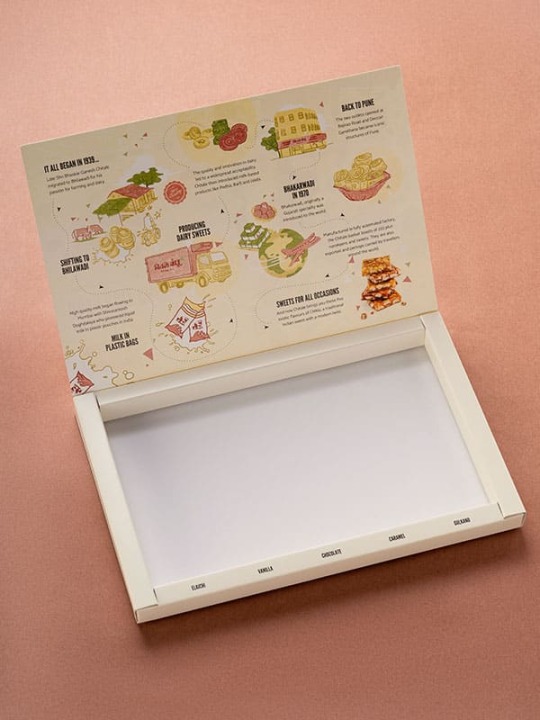
Importance of Sustainable Packaging:
Sustainable packaging plays a prime role in minimizing waste, conserving resources, and minimizing environmental impact.This doesn’t only prioritize eco-conscious consumers but also is very beneficial for businesses in the long run.
Sustainable packaging can enhance brand reputation, attract environmentally conscious customers, and lead to cost savings through optimized material usage and streamlined logistics.
Sustainable Packaging Trends:
Read below to know more about the top Sustainable Packaging Trends that are shaping the future of packaging industry.
Eco-Friendly Packaging Materials:
To achieve sustainable packaging goals, businesses are increasingly turning to eco-friendly materials that have minimal impact on the environment. Three prominent options are:
Biodegradable Packaging: Biodegradable packaging materials are designed to decompose naturally over time, minimizing the piling of waste in landfills. They are formed from plant-based polymers, such as PLA (polylactic acid), which can break down into harmless elements with the help of microorganisms.
Compostable Packaging: Compostable packaging goes a step further by not only breaking down but also providing valuable nutrients to the soil during the composting process. These materials are made from organic matter, such as cornstarch or bagasse, and contribute to a circular economy by turning into compost that can enrich agricultural lands.
Recyclable Packaging: Recyclable packaging materials includes cardboard, glass, and certain types of plastics, can be gathered, refined, and reused to create new packaging or other products. Recycling preserves resources, reduces usage of energy, and minimizes the demand for virgin materials.
Minimalistic Packaging:
One of the emerging sustainable packaging trends is minimalistic design. This approach focuses on eliminating excess packaging and using the bare minimum required to protect and present the product.
Minimalistic packaging not only reduces waste but also enhances the product’s visual appeal, creating a sleek and modern aesthetic.
Packaging Reduction and Lightweighting:
To further minimize the impact of packaging on the environment, companies are vigorously. seeking ways to minimize the amount of material used. Packaging reduction involves optimizing the size and dimensions of packaging to minimize waste, transportation costs, and storage requirements.
Lightweight, on the other hand, aims to decrease the weight of packaging materials without compromising their integrity, leading to energy savings and reduced emissions during transportation.
Smart Packaging Solutions:
Advancements in technology have paved the way for smart packaging solutions that offer enhanced functionality while remaining environmentally friendly. Two notable examples are:
Intelligent Labels: Intelligent labels comprise of RFID (Radio Frequency Identification) or NFC (Near Field Communication) technology to impart real-time insights about the product, such as its origin, ingredients, and expiration date. By enabling consumers to make informed choices, intelligent labels promote transparency and minimize food waste.
Active Packaging: Active packaging involves the integration of active substances or components into the packaging material to extend the shelf life of the product. Oxygen absorbers, moisture control packets, and antimicrobial films are examples of active packaging solutions that help maintain product freshness, reduce spoilage, and minimize food waste.
Plant-Based and Renewable Packaging:
As the demand for sustainable packaging grows, there is a rising focus on plant-based and renewable materials. Packaging created from renewable resources, such as bamboo, sugarcane, or hemp, offers a viable substitute to traditional petroleum-based plastics.
These materials are not only biodegradable or dispensable but also have a lower carbon footprint during production.
Packaging Innovations:
In addition to the aforementioned sustainable packaging trends, packaging innovations continue to drive sustainable practices. Three noteworthy innovations include:
Edible Packaging: Edible packaging materials, often made from natural polymers like seaweed or starch, can be consumed along with the product. This eliminates the need for additional waste and offers a unique, eco-friendly packaging experience.
Water-Soluble Packaging: Water-soluble packaging is created to dissolve when it comes into contact with water, minimizing the amount of waste produced. This type of packaging is particularly applicable for single-use items like detergent pods or dishwasher tablets.
Mushroom Packaging: Mushroom packaging is also known as mycelium packaging, it makes use of the root structure of mushrooms to create a biodegradable and compostable material. It offers a sustainable alternative to foam-based packaging materials, minimizing reliance on non-biodegradable options.
Packaging for E-commerce:
With the emergence of e-commerce, sustainable packaging solutions are crucial to minimizing the environmental impact of shipping and handling.
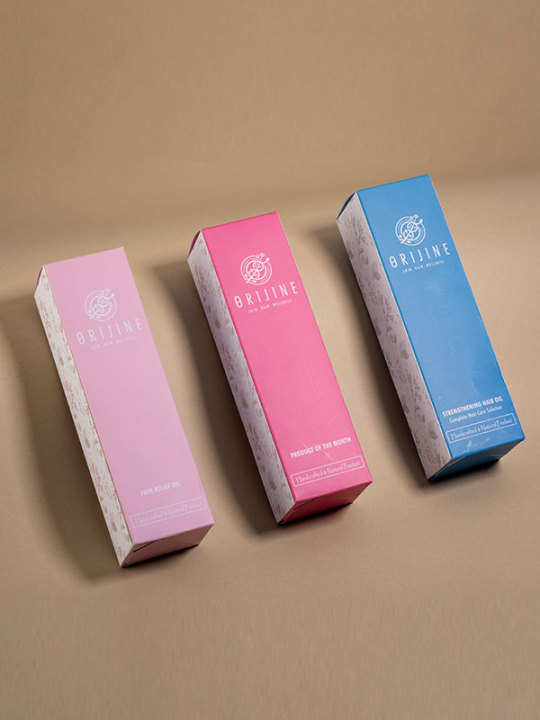
Sustainable Packaging Trends in the Food Industry:
The food industry is actively adapting to sustainable packaging practices to address the challenges of food waste and environmental impact.
From compostable food containers to eco-friendly food wraps, innovative packaging solutions are being developed to ensure the freshness and safety of food products while reducing the ecological footprint.
Sustainable Packaging Trends in the Beauty and Personal Care Industry:

Sustainable Packaging Trends in the Fashion Industry:
Sustainable Packaging is gaining popularity in the Fashion Industry, as various brands realize the need to minimize environmental impact of products.
Packaging that is created using recycled materials, biodegradable garment bags and innovative ideas such as seaweed-based packaging is becoming increasingly popular.
Sustainable Packaging Trends in the Electronics Industry:
The electronics industry is notorious for its excessive packaging and e-waste. However, manufacturers are now adopting to sustainable packaging trends such as corrugated cardboard, molded pulp, and plant-based plastics to minimize waste generation and improve recycling rates.
Collaboration for Sustainable Packaging:
Collaboration between stakeholders is crucial to drive sustainable packaging initiatives forward. Brands, packaging manufacturers, consumers, and policymakers need to work in harmony to develop and implement effective strategies that boost sustainable practices throughout the supply chain.
Conclusion – Sustainable Packaging Trends:
In conclusion, the packaging industry is witnessing a shift towards sustainability, driven by the growing awareness of environmental issues and consumer preferences.
In 2023, the top sustainable packaging trends will revolve around eco-friendly materials, minimalistic design, packaging reduction, smart solutions, plant-based alternatives, and innovative packaging options.
By adapting to these sustainable packaging trends, businesses can align with consumer values, minimize their carbon footprint, and contribute to a more sustainable future.
FAQs:
Why is sustainable packaging important?
Sustainable packaging is crucial as it helps to minimize waste, preserve resources, and minimize environmental impact. It also improves brand reputation and attracts eco-conscious consumers.
What are some eco-friendly packaging materials?
Eco-friendly packaging materials such as biodegradable packaging, compostable packaging, and recyclable packaging. These materials have minimal impact on the environment and promote a circular economy.
How can minimalistic packaging benefit businesses?
Minimalistic packaging not only reduces waste but also enhances the visual appeal of products, creating a sleek and modern aesthetic. It can attract consumers and differentiate brands in the market.
What are some packaging innovations in sustainability?
Some packaging innovations in sustainability include edible packaging, water-soluble packaging, and mushroom packaging. These innovations offer biodegradable or compostable alternatives to traditional packaging materials.
How can collaboration drive sustainable packaging initiatives?
Collaboration between brands, packaging manufacturers, consumers, and policymakers is crucial to develop and implement effective strategies for sustainable packaging. By working together, stakeholders can drive positive change throughout the supply chain.
2 notes
·
View notes
Text
Wearable Technology and its Influence on Lifestyle

Introduction
Wearable technology has emerged as a significant trend in recent years, revolutionizing the way we interact with our surroundings and impacting various aspects of our lives. From fitness trackers and smartwatches to augmented reality glasses and health monitoring devices, wearable technology has made its way into our daily routines, influencing our lifestyle choices and habits. In this article, we will explore the different types of wearable technology, examine their benefits, discuss their impact on lifestyle, delve into the intersection of wearable tech and fashion, address challenges and concerns, and look into future trends in this exciting field.
Types of Wearable Technology
One of the most common forms of wearable technology is smartwatches and fitness trackers. These devices not only tell the time but also provide various health and fitness metrics, including heart rate, steps taken, and calories burned. They have become popular among individuals who want to monitor their physical activity and maintain a healthy lifestyle.
Augmented reality (AR) glasses, such as the much-talked-about Apple Vison Pro, offer an immersive experience by overlaying digital information onto the real world. They have the potential to transform industries like gaming, navigation, and education, providing users with enhanced visual content and interactive experiences.
Smart clothing and accessories are another category of wearable technology. These innovative garments and accessories incorporate sensors and technology to monitor biometric data, track movements, and even adjust temperature and moisture levels. They offer both functionality and style, making them popular among fitness enthusiasts and fashion-forward individuals.
Health monitoring devices, such as glucose monitors and sleep trackers, have gained significant attention for their ability to provide real-time health information and personalized insights. These devices empower individuals to take control of their well-being and make informed decisions about their health.
Benefits of Wearable Technology

Wearable technology offers numerous benefits that positively impact our daily lives. Firstly, it enables health and fitness tracking, allowing individuals to monitor their physical activity, heart rate, sleep patterns, and more. This data empowers users to set and achieve their health goals, leading to improved well-being.
Convenience and accessibility are also significant advantages of wearable tech. With smartwatches and fitness trackers strapped to our wrists, we can easily access notifications, messages, and calls without reaching for our smartphones. This seamless connectivity ensures we stay connected and informed while keeping our hands free.
Furthermore, wearable technology enhances productivity and efficiency. With features like voice assistants and reminders, we can manage our tasks and schedules effortlessly. Wearable devices also enable quick access to information, whether it’s checking the weather or getting directions, minimizing the need to use other devices.
Impact on Lifestyle

The influence of wearable technology on lifestyle is profound. It has significantly impacted various areas of our lives, including fitness and wellness, communication and connectivity, entertainment and gaming, and work and productivity.
In terms of fitness and wellness, wearable devices have become essential tools for individuals striving to maintain an active lifestyle. They provide real-time feedback on physical activity, heart rate, and sleep patterns, motivating users to make healthier choices and reach their fitness goals. Wearable tech has transformed the way we approach exercise, making it more engaging and personalized.
When it comes to communication and connectivity, wearable technology has made staying connected easier than ever. With smartwatches and AR glasses, we can receive and respond to messages, calls, and social media notifications without having to constantly check our phones. This seamless integration allows us to stay in touch with loved ones and stay updated on important information while being more present in the moment.
The entertainment and gaming industry has also been revolutionized by wearable tech. Virtual reality (VR) headsets and AR glasses provide immersive experiences, transporting users to virtual worlds and overlaying digital content onto the real world. From gaming and interactive storytelling to virtual tours and educational experiences, wearable technology has opened up a new realm of possibilities for entertainment and engagement.
In the workplace, wearable technology has the potential to increase productivity and efficiency. From smartwatches that enable quick access to emails and calendars to smart glasses that provide hands-free access to information and instructions, these devices streamline workflows and minimize distractions. They allow professionals to stay organized, communicate seamlessly, and access information on the go, ultimately enhancing their productivity.
Wearable Technology and Fashion

The intersection of wearable technology and fashion has given rise to a new era of tech-infused style. Wearable devices are no longer just functional gadgets; they have become fashion accessories that merge technology with aesthetics. The integration of technology and style has opened up exciting possibilities, where form meets function in the most fashionable way.
Fashion-forward wearable devices, such as designer smartwatches and smart jewelry, cater to individuals who prioritize both style and functionality. These devices seamlessly blend into our everyday outfits, allowing us to express our personal style while enjoying the benefits of wearable technology. Fashion houses and tech companies are increasingly collaborating to create innovative wearables that are as visually appealing as they are technologically advanced.
The collaboration between the fashion and tech industries is not limited to wearable devices alone. Runway shows and events showcase the fusion of fashion and technology, highlighting garments and accessories that incorporate cutting-edge technology. From garments that change color or pattern based on environmental conditions to accessories that charge our devices wirelessly, these collaborations push the boundaries of creativity and innovation.
Challenges and Concerns

While wearable technology brings many advantages, it also raises certain challenges and concerns that need to be addressed. One of the primary concerns is privacy and data security. Wearable devices collect sensitive personal data, including health information and location data. Ensuring that this data is protected from unauthorized access and used responsibly is crucial to maintaining user trust.
Another challenge is the potential dependence and addiction that can arise from constantly wearing and relying on wearable devices. Some individuals may become overly reliant on the data and feedback provided by these devices, potentially leading to anxiety or unhealthy behaviors. It is important to strike a balance and use wearable technology as a tool to enhance our lives rather than let it dictate our every move.
The social implications of wearable technology also deserve attention. In an increasingly connected world, where everyone is constantly monitoring and sharing their activities, there can be a blurring of boundaries between the digital and physical realms. Finding a balance between being present in the real world and embracing the possibilities of wearable tech is essential for maintaining genuine human connections.
Future Trends in Wearable Technology

As technology continues to advance, the future of wearable technology looks promising. Here are some exciting trends to watch out for:
Advancements in sensor technology: Wearable devices will become even more accurate and sophisticated in capturing and analyzing data. Sensor technology will improve, allowing for more precise health monitoring, activity tracking, and environmental sensing. This will lead to more personalized insights and recommendations for users.
Integration with artificial intelligence (AI): AI will play a significant role in wearable technology, enabling devices to learn from user behavior and adapt accordingly. Wearable devices will become smarter in understanding and predicting our needs, providing proactive assistance and personalized experiences. AI-powered voice assistants will become more natural and intuitive, allowing for seamless interactions with wearable devices.
Medical and healthcare applications: Wearable technology will continue to expand its presence in the medical and healthcare fields. Devices capable of monitoring vital signs, detecting early signs of diseases, and even administering medication will become more prevalent. Wearable tech will empower individuals to take control of their health and enable healthcare professionals to access real-time data for more accurate diagnoses and personalized treatment plans.
Conclusion
Wearable technology has become an integral part of our lives, offering a range of benefits and influencing our lifestyle choices. From smartwatches and fitness trackers to augmented reality glasses and health monitoring devices, wearable tech has transformed the way we interact with our surroundings. It has enhanced our fitness and wellness journeys, improved communication and connectivity, introduced new avenues for entertainment, and increased productivity in the workplace.
The intersection of wearable technology and fashion has brought about stylish and functional devices that merge technology with personal style. Collaborations between fashion and tech industries continue to push the boundaries of creativity, resulting in innovative wearable designs that cater to both fashion enthusiasts and tech-savvy individuals.
However, challenges such as privacy concerns, dependence on wearable devices, and potential social implications need to be addressed. Striking a balance between utilizing wearable technology as a tool for convenience and not letting it overshadow genuine human connections is essential.
Looking ahead, advancements in sensor technology, integration with AI, and the expansion of wearable tech in medical and healthcare applications are trends that will shape the future. Wearable devices will become even more intelligent, personalized, and capable of improving our lives in numerous ways.
5 Unique FAQs
1. Are wearable devices waterproof?
While some wearable devices are water-resistant, not all of them are fully waterproof. It’s important to check the specifications and ratings of the specific device you’re interested in to determine its water resistance capabilities. Some devices are designed to withstand water splashes and sweat, while others can be worn while swimming or showering.
2. Can wearable technology replace traditional medical devices?
Wearable technology has the potential to complement traditional medical devices, but it cannot fully replace them. While wearable devices can provide valuable health data and insights, they may not be as accurate or specialized as medical-grade equipment. They can, however, aid in monitoring certain conditions and providing individuals with proactive health information.
3. How secure is the data collected by wearable devices?
Data security is a significant concern when it comes to wearable technology. Manufacturers and developers understand the importance of protecting user data and employ various security measures. However, it’s essential for users to be cautious and choose reputable brands, utilize strong passwords, and keep their devices updated to minimize the risk of data breaches.
4. Can wearable technology improve workplace productivity?
Yes, wearable technology can enhance workplace productivity. With features like notifications, reminders, and access to information at a glance, wearable devices can streamline tasks and minimize distractions. However, it’s important for individuals to use these devices mindfully and strike a balance between utilizing their features and staying focused on their work.
5. What are the implications of wearable technology on privacy?
Wearable technology collects personal data, such as health information and location data. This raises concerns about privacy and how that data is used and protected. It’s crucial for manufacturers and developers to prioritize data privacy and security, implementing robust measures to safeguard user information. Users should also review privacy policies, understand data sharing practices, and exercise caution when granting permissions to apps and services.
1 note
·
View note
Text
we're all familiar with throwing money at a problem until it fixes it, but this asshat is the only individual i've seen take something with good design that is functioning really well...
and then throw billions of dollars at it until it's ruined
not just twitter either, if you look at all the things that are wrong with the cyber truck, its mostly stuff the auto industry has spent the last hundred years figuring out, like how to run wiring through the frame but still be able to go through a car wash, that safety glass is the best kind of glass for car windows, or why you shouldn't glue your car together.
and Tesla was the leader of the electric car world until he bought the company from the smart people who actually invented the tesla vehicles ... now the E.V. market is trending downward - unless you remove tesla's cars from the data
not to mention the way NASA has been perfecting space travel for like 65 years but this jerkoff insists on spending billions to do it worse himself
he's gonna do it with Neuralink too, mark my words - it was a great tech development. I've been following the progress for years and years. It was medical tech, before he got a hold of it they had progressed it to a point where a person who was so paralyzed they couldn't even move their mouth to talk, could, with the chip implant, move a mouse cursor on a computer, meaning instead of lying in bed locked in their body with no way to communicate or recreate, now they could talk to people and play games and surf the web etc. I think that is both super cool and pretty important. But what he does is he buys a developing tech after someone else has done the decades of work making it viable, then he ignores everything they know about it and runs it into the ground. Of course he doesn't give a shit about the paralyzed people, he'll try to make it the "next big thing", ruin it, and then blame the people who tried to tell him he was ruining it.
I've been saying he's a mean dumbass since he interfered with the rescue of those kids in the cave in Thailand in 2018 and then said the rescue diver who actually saved them all only did it because he was a pedophile (twice! on twitter to his, at the time, 22 million followers) which of course was totally baseless.
I'm so glad that the rest of the world is starting to see him for who he is. He's incredibly stupid, and also an asshole.
and before anyone brings up him being on the spectrum (because i hear that defense of him sometimes?) let me just say, that's just something he decided for himself without any professional input from any kind of doctor or therapist, and since he has shown himself to be both an idiot and a liar, i don't believe him for a second, but even if it was true, A: a person can be both autistic and a horrible person, those are separate things, and B: none of the reasons i hate him have anything to do with characteristics he may or may not have in common with autistic people.
fuck that guy in particular
elon musk buying twitter and publicly embarrassing himself is a net positive because finally people believe us when we say he is not that smart. so many videos criticizing him before his takeover always had to add the disclaimer 'sure, he's a smart guy, but-' and now you don't.
not that you ever had to but god its so much funnier when people try to argue that hes smart now
487 notes
·
View notes
Text
Polyvinyl Butyral (PVB) Films and Sheets Market, Global Outlook and Forecast 2025-2032
Polyvinyl Butyral (PVB) films and sheets are essential materials used in various industries due to their unique set of properties, including high transparency, high adhesion to glass, and excellent toughness and flexibility. PVB films are predominantly used as an interlayer between glass sheets to produce laminated glass, which is commonly used in automotive windows, architectural glass, solar panels, and other safety-critical applications.
The PVB films and sheets market comprises the manufacturing and distribution of these materials, with applications ranging across construction, automotive, solar energy, and other niche sectors. Laminated glass, made with PVB, provides enhanced safety, sound insulation, UV filtration, and impact resistance. As such, PVB films serve as an integral component in various manufacturing processes for both consumer products and industrial uses.
Download a free Sample Report PDF
Market Size
The global market for Polyvinyl Butyral (PVB) films and sheets was valued at USD 962.80 million in 2023 and is expected to grow at a compound annual growth rate (CAGR) of 5.10%, reaching USD 1363.81 million by 2032. This growth is driven by the increasing demand for laminated glass in industries such as construction, automotive, and solar energy. Additionally, the growing awareness of safety features and technological advancements in glass manufacturing have contributed to market expansion.
Regional markets are showing significant growth, with North America, Europe, and Asia-Pacific being major contributors to this trend. North America's PVB films and sheets market was valued at USD 250.88 million in 2023 and is projected to grow at a CAGR of 4.37% through 2032. This indicates a steady demand for PVB in sectors like automotive and architectural glass, particularly with the rise in vehicle safety standards and the booming construction industry.
Market Dynamics (Drivers, Restraints, Opportunities, and Challenges)
Drivers
Growing Construction Industry: The increasing demand for high-performance glass in buildings, especially in commercial and residential constructions, is a key driver for PVB films. Laminated glass, produced with PVB films, offers improved safety and aesthetic appeal, which are crucial for modern architecture.
Rising Automotive Safety Regulations: As vehicle manufacturers and governments worldwide focus on enhancing road safety, the demand for laminated glass in vehicles has surged. PVB films provide shatterproof and impact-resistant properties, which are critical for automotive safety standards.
Expansion of Solar Energy: The solar energy sector has seen significant growth due to the global push for sustainable energy solutions. PVB films, used in the production of solar panels, enhance their durability and efficiency. As solar energy adoption increases, the demand for PVB films in this sector is expected to rise.
Restraints
Raw Material Price Fluctuations: The cost of polyvinyl alcohol (PVA), the primary raw material for producing PVB films, is subject to price fluctuations. These fluctuations can impact the overall cost of PVB production, posing challenges for manufacturers.
Environmental Concerns: The disposal and recyclability of PVB films can be a significant challenge, as the materials are not easily biodegradable. With increasing environmental regulations, manufacturers are facing pressure to find sustainable and eco-friendly alternatives or develop recycling methods for PVB-based products.
Opportunities
Technological Advancements: Innovation in PVB film production, such as the development of multi-functional PVB films with advanced UV filtering and noise reduction properties, presents an opportunity for growth. These innovations can cater to new market demands, such as energy-efficient buildings and smart automobiles.
Emerging Markets: Regions such as Asia-Pacific and South America offer untapped growth potential, driven by the rapid industrialization and urbanization in these areas. The expanding automotive and construction industries in countries like India and Brazil are expected to drive demand for PVB films.
Challenges
Competition from Alternative Materials: The PVB film market faces stiff competition from other interlayer materials, such as ethylene vinyl acetate (EVA) and thermoplastic polyurethane (TPU), which also offer safety and durability features. The adoption of these alternatives may limit the growth of the PVB market.
Supply Chain Disruptions: Global supply chain disruptions, such as those caused by the COVID-19 pandemic or geopolitical issues, have affected the manufacturing and distribution of PVB films. Such disruptions may lead to delays and increased costs.
Regional Analysis
The demand for Polyvinyl Butyral (PVB) films and sheets varies significantly across regions, with North America, Europe, and Asia-Pacific being the key markets.
North America: The North American market is poised for steady growth due to the booming construction industry and increasing automotive safety standards. The region's focus on energy-efficient buildings and smart technologies further boosts the demand for laminated glass, thus driving the PVB films market.
Europe: Europe is another prominent region, with countries like Germany, France, and the UK leading the market. The European Union’s stringent regulations on vehicle safety and building codes contribute to the widespread use of PVB films in both the automotive and construction sectors. Moreover, the adoption of green energy solutions, such as solar power, provides significant opportunities for PVB manufacturers.
Asia-Pacific: Asia-Pacific is expected to see the highest growth rate during the forecast period, owing to rapid industrialization in countries like China and India. The automotive and construction industries are growing, and the demand for PVB films in laminated glass applications is increasing. The region's focus on renewable energy sources also creates a growing demand for PVB films in solar panels.
South America: While smaller in comparison to other regions, the South American market is expanding due to the increasing adoption of PVB films in both automotive and construction industries. Growth in countries like Brazil and Argentina contributes to the demand for PVB-based products.
Middle East and Africa (MEA): The MEA region is gradually increasing its adoption of PVB films, particularly in the construction industry, driven by infrastructural development and a growing focus on automotive safety. However, the market in this region remains relatively underdeveloped compared to others.
Competitor Analysis
The global Polyvinyl Butyral (PVB) films and sheets market is highly competitive, with key players such as Eastman Chemical, KURARAY, SEKISUI CHEMICAL, Kingboard Chemical Holdings, and Huakai Plastic leading the market. These companies dominate through extensive product portfolios, established supply chains, and strong research and development (R&D) capabilities.
Eastman Chemical is a global leader in the production of PVB films, offering a wide range of products for automotive, construction, and solar applications.
KURARAY is known for its high-quality PVB films and has a strong presence in both automotive and construction markets.
SEKISUI CHEMICAL focuses on advanced PVB technologies, including the development of eco-friendly PVB films, positioning itself as a leader in sustainability.
Global Polyvinyl Butyral (PVB) Films and Sheets Market: Market Segmentation Analysis
This report provides a deep insight into the global Polyvinyl Butyral (PVB) Films and Sheets market, covering all its essential aspects. This ranges from a macro overview of the market to micro details of the market size, competitive landscape, development trend, niche market, key market drivers and challenges, SWOT analysis, value chain analysis, etc.
The analysis helps the reader to shape the competition within the industries and strategies for the competitive environment to enhance the potential profit. Furthermore, it provides a simple framework for evaluating and assessing the position of the business organization. The report structure also focuses on the competitive landscape of the Global Polyvinyl Butyral (PVB) Films and Sheets Market. This report introduces in detail the market share, market performance, product situation, operation situation, etc., of the main players, which helps the readers in the industry to identify the main competitors and deeply understand the competition pattern of the market.
In a word, this report is a must-read for industry players, investors, researchers, consultants, business strategists, and all those who have any kind of stake or are planning to foray into the Polyvinyl Butyral (PVB) Films and Sheets market in any manner.
Market Segmentation (by Application)
Construction
Ground Transportation
Solar Energy
Others
Market Segmentation (by Type)
Films
Sheets
Key Company
Eastman Chemical
KURARAY
SEKISUI CHEMICAL
Kingboard Chemical Holdings
Huakai Plastic
Zhejiang Decent Plastic
Tiantai Kanglai Industrial
Zhejiang Pulijin Plastic
Geographic Segmentation
North America (USA, Canada, Mexico)
Europe (Germany, UK, France, Russia, Italy, Rest of Europe)
Asia-Pacific (China, Japan, South Korea, India, Southeast Asia, Rest of Asia-Pacific)
South America (Brazil, Argentina, Columbia, Rest of South America)
The Middle East and Africa (Saudi Arabia, UAE, Egypt, Nigeria, South Africa, Rest of MEA)
FAQ
What is the current market size of Polyvinyl Butyral (PVB) Films and Sheets?
➣ The current market size of Polyvinyl Butyral (PVB) Films and Sheets was USD 962.80 million in 2023 and is expected to grow to USD 1363.81 million by 2032.
Which are the key companies operating in the Polyvinyl Butyral (PVB) Films and Sheets market?
➣ Key players in the market include Eastman Chemical, KURARAY, SEKISUI CHEMICAL, Kingboard Chemical Holdings, and Huakai Plastic.
What are the key growth drivers in the Polyvinyl Butyral (PVB) Films and Sheets market?
➣ Key growth drivers include the growing demand for laminated glass in construction and automotive sectors, increasing safety regulations, and the rise of renewable energy solutions such as solar power.
Which regions dominate the Polyvinyl Butyral (PVB) Films and Sheets market?
➣ The major regions dominating the market are North America, Europe, and Asia-Pacific, with North America leading in automotive applications and Asia-Pacific showing the highest growth potential.
What are the emerging trends in the Polyvinyl Butyral (PVB) Films and Sheets market?
➣ Emerging trends include innovations in eco-friendly PVB films, increasing adoption in solar energy applications, and technological advancements in laminated glass for both safety and aesthetic purposes.
Key Benefits of This Market Research:
• Industry drivers, restraints, and opportunities covered in the study
• Neutral perspective on the market performance
• Recent industry trends and developments
• Competitive landscape & strategies of key players
• Potential & niche segments and regions exhibiting promising growth covered
• Historical, current, and projected market size, in terms of value
• In-depth analysis of the Polyvinyl Butyral (PVB) Films and Sheets Market
• Overview of the regional outlook of the Polyvinyl Butyral (PVB) Films and Sheets Market:
Key Reasons to Buy this Report:
• Access to date statistics compiled by our researchers. These provide you with historical and forecast data, which is analyzed to tell you why your market is set to change
• This enables you to anticipate market changes to remain ahead of your competitors
• You will be able to copy data from the Excel spreadsheet straight into your marketing plans, business presentations, or other strategic documents
• The concise analysis, clear graph, and table format will enable you to pinpoint the information you require quickly
• Provision of market value (USD Billion) data for each segment and sub-segment
• Indicates the region and segment that is expected to witness the fastest growth as well as to dominate the market
• Analysis by geography highlighting the consumption of the product/service in the region as well as indicating the factors that are affecting the market within each region
• Competitive landscape which incorporates the market ranking of the major players, along with new service/product launches, partnerships, business expansions, and acquisitions in the past five years of companies profiled
• Extensive company profiles comprising of company overview, company insights, product benchmarking, and SWOT analysis for the major market players
• The current as well as the future market outlook of the industry concerning recent developments which involve growth opportunities and drivers as well as challenges and restraints of both emerging as well as developed regions
• Includes in-depth analysis of the market from various perspectives through Porter’s five forces analysis
• Provides insight into the market through Value Chain
• Market dynamics scenario, along with growth opportunities of the market in the years to come
• 6-month post-sales analyst support
Download a free Sample Report PDF
𝗠𝗼𝗿𝗲 𝗔𝗿𝘁𝗶𝗰𝗹𝗲𝘀 𝗙𝗿𝗼𝗺 𝟮𝟰𝗖𝗵𝗲𝗺𝗶𝗰𝗮𝗹 𝗥𝗲𝘀𝗲𝗮𝗿𝗰𝗵
𝟮𝟰𝗖𝗵𝗲𝗺𝗶𝗰𝗮𝗹𝗥𝗲𝘀𝗲𝗮𝗿𝗰𝗵: https://www.linkedin.com/company/24chemicalresearchold/
𝐈𝐧𝐨𝐫𝐠𝐚𝐧𝐢𝐜 𝐌𝐚𝐭𝐞𝐫𝐢𝐚𝐥𝐬:https://www.linkedin.com/pulse/recycled-foam-glass-aggregate-market-sizedemand-supply-kdu1c
𝐏𝐨𝐥𝐲𝐦𝐞𝐫:https://www.linkedin.com/pulse/recycled-hips-market-sizedemand-supply-regional-competitive-2wytc
𝐒𝐩𝐞𝐜𝐢𝐚𝐥𝐢𝐭𝐲 𝐂𝐡𝐞𝐦𝐢𝐜𝐚𝐥𝐬:https://www.linkedin.com/pulse/r-methy-ibenzy-lamine-market-sizedemand-supply-regional-2of3c/?trackingId=507lA9fzjluqgUCWJigo5Q%3D%3D
𝐀𝐝𝐯𝐚𝐧𝐜𝐞𝐝 𝐌𝐚𝐭𝐞𝐫𝐢𝐚𝐥𝐬:https://www.linkedin.com/pulse/rare-earth-permanent-magnet-consumer-electronics-market-rt1lc/?trackingId=pL1BjkzUM0hM0G%2B2mPBScg%3D%3D
𝐆𝐫𝐞𝐞𝐧 𝐂𝐡𝐞𝐦𝐢𝐜𝐚𝐥𝐬:https://www.linkedin.com/pulse/recovered-carbon-black-market-sizedemand-supply-regional-s7vdc/?trackingId=MObGWzC0oOl%2BHkPFgAwdew%3D%3D
𝐌𝐞𝐭𝐚𝐥𝐬 𝐚𝐧𝐝 𝐌𝐢𝐧𝐞𝐫𝐚𝐥𝐬:https://www.linkedin.com/pulse/rectangular-aluminum-slugs-market-sizedemand-supply-vnaoc
𝐏𝐨𝐥𝐲𝐦𝐞𝐫:https://www.linkedin.com/pulse/recycled-poy-yarn-market-sizedemand-supply-regional-jvmzc/?trackingId=TC8f86KYfLOrDJUsVvbZUQ%3D%3D
𝐀𝐝𝐯𝐚𝐧𝐜𝐞𝐝 𝐌𝐚𝐭𝐞𝐫𝐢𝐚𝐥𝐬:https://www.linkedin.com/pulse/rare-earth-sputtering-target-market-sizedemand-supply-xgjuc/?trackingId=ee4BI4AAIIk6NymKgfgIfA%3D%3D
𝐀𝐝𝐯𝐚𝐧𝐜𝐞𝐝 𝐌𝐚𝐭𝐞𝐫𝐢𝐚𝐥𝐬:https://www.linkedin.com/pulse/recyclable-dunnage-market-sizedemand-supply-regional-ydl8c/?trackingId=Ypa9fh9zLU3l9%2BiSXTd3nw%3D%3D
𝐏𝐨𝐥𝐲𝐦𝐞𝐫:https://www.linkedin.com/pulse/recycled-polyester-filament-yarn-market-sizedemand-bsvcc/?trackingId=pq%2BIrjiv0OJSc15z3dolRg%3D%3D
𝐏𝐨𝐥𝐲𝐦𝐞𝐫:https://www.linkedin.com/pulse/recycled-polyester-staple-fiber-spinning-market-sizedemand-l0fic
𝐏𝐨𝐥𝐲𝐦𝐞𝐫:https://www.linkedin.com/pulse/recycled-polyoxymethylene-market-sizedemand-supply-7k5jc/?trackingId=g7AF2B%2F3NzgulwGywYY%2Btw%3D%3D
𝐏𝐨𝐥𝐲𝐦𝐞𝐫:https://www.linkedin.com/pulse/recycled-resin-market-sizedemand-supply-regional-p6zjc/?trackingId=7s6gp2Yq%2B68R1uxu6GviTw%3D%3D
𝐏𝐚𝐢𝐧𝐭𝐬 𝐀𝐧𝐝 𝐂𝐨𝐚𝐭𝐢𝐧𝐠𝐬:https://www.linkedin.com/pulse/reflective-cooling-paint-market-sizedemand-supply-g4ybc/?trackingId=Xsc3LJXF5OChIlOCYpLxnA%3D%3D
𝐀𝐝𝐯𝐚𝐧𝐜𝐞𝐝 𝐌𝐚𝐭𝐞𝐫𝐢𝐚𝐥𝐬:https://www.linkedin.com/pulse/retroreflective-sheeting-traffic-control-market-sizedemand-xodbc/?trackingId=fdRcyApNbuua%2B1Hny6z24w%3D%3D
𝐅𝐨𝐥𝐥𝐨𝐰 𝐔𝐬 𝐎𝐧 𝐥𝐢𝐧𝐤𝐞𝐝𝐢𝐧 :- https://www.linkedin.com/company/24chemicalresearch/
0 notes
Text
Sustainable Practices in the Hospitality Industry: A 2025 Perspective
Sustainability is no longer just a buzzword—it’s a necessity. The hospitality industry has been actively adopting eco-friendly practices to reduce environmental impact while enhancing guest experiences. From energy-efficient technologies to waste reduction strategies, hotels worldwide are making significant changes. As we step into 2025, sustainable hospitality has become a defining factor for travellers looking for responsible yet luxurious stays. Many hotels are leading the way by integrating green initiatives without compromising on comfort and service.
1. Energy-Efficient Operations
Modern hotels are investing in renewable energy solutions, such as solar power and energy-efficient lighting, to reduce their carbon footprint. Smart room technology, including motion-sensor lighting and automated temperature controls, has become the norm. Many 4-star hotels in Delhi have integrated these features to balance comfort with sustainability, ensuring guests enjoy a premium experience while minimising energy waste.
2. Waste Reduction Strategies
Waste management is a growing concern, and hospitality brands are taking proactive steps to address it. Hotels are reducing single-use plastics by offering refillable glass water bottles and replacing disposable toiletries with eco-friendly dispensers. In food and beverage operations, initiatives like composting, portion control, and surplus food donations have gained momentum. Whether in luxury properties or hotels, these measures are shaping a more responsible approach to waste.
3. Water Conservation Measures
Water scarcity is a critical issue, and hotels are implementing measures such as low-flow faucets, rainwater harvesting, and linen reuse programs to conserve water. Many properties, including those in Hotels in Pitampura, Delhi, are adopting these practices to ensure responsible water usage without compromising on guest comfort.
4. Sustainable Dining Experiences
The demand for sustainable dining has led hotels to source organic, locally produced ingredients and minimise food waste. Many upscale hotels now feature farm-to-table dining experiences, ensuring guests enjoy fresh, ethically sourced cuisine. Establishments recognised among the best restaurant hotels in New Delhi are embracing these trends, enhancing their culinary offerings while reducing their environmental impact.
5. Green Event Planning
Banquet and event spaces are also adapting to sustainability trends. Digital invitations, paperless planning, and eco-friendly décor are becoming standard in the industry. Event venues are focusing on reducing waste by using biodegradable materials and optimising energy consumption during large gatherings.
6. Community Engagement and Responsible Tourism
Sustainable hospitality extends beyond hotel premises. Many hotels are engaging with local communities through initiatives such as cultural tourism, artisan partnerships, and conservation programs. By supporting local economies and promoting responsible tourism, hotels contribute to both environmental and social sustainability.
The hospitality industry is evolving, and sustainability is now an integral part of guest expectations. From energy conservation and waste reduction to responsible dining and eco-friendly event planning, hotels are redefining luxury with a greener approach.
The hospitality industry is evolving, and sustainability is now an integral part of guest expectations. From energy conservation and waste reduction to responsible dining and eco-friendly event planning, hotels are redefining luxury with a greener approach.
At City Park Hotel, sustainability is not just a practice—it is a vision for the future. The hotel is committed to fostering responsible tourism, ensuring that its environmental impact is minimised while enriching the experiences of both guests and local communities. Beyond energy-efficient spaces and sustainable dining, City Park Hotel is committed to global wellness, benefiting both travellers and the local community. By integrating green initiatives and supporting eco-conscious programs, the hotel helps maintain a balance between tourism and environmental responsibility.
With climate change and global health concerns shaping the world, hospitality must go beyond guest comfort. This means providing eco-friendly stays while prioritising the well-being of guests, employees, and the community. As more travellers seek destinations that align with their values, City Park Hotel continues to set new benchmarks for responsible hospitality—where luxury, care, and sustainability thrive together.
But sustainability doesn’t mean compromising on luxury. Every detail remains just as indulgent and refined. You may not even notice the subtle changes—digital menus, energy-efficient lighting, or locally sourced ingredients—but each plays a vital role in shaping a more sustainable future.
Sustainable travel is the future, and City Park Hotel is proud to be part of this movement, ensuring every stay contributes to a healthier planet—without taking away from the comfort and elegance you deserve. Are you ready to be part of the change?
https://cityparkhotel.in/sustainable-practices-in-the-hospitality-industry-a-2025-perspective/
#luxury hotels in delhi#top hotels in delhi#best 5 star hotels in delhi#best hotels in delhi#4 star hotels in delhi
0 notes
Text
Europe Waste Management Market Growth, Analysis, Share, Trends, Segmentation and Forecast to 2030
The Europe waste management market size was valued at US$ 188.28 billion in 2022 and is projected to reach US$ 252.40 billion by 2030; it is expected to register a CAGR of 3.7% during 2022-2030.
📚 𝐃𝐨𝐰𝐧𝐥𝐨𝐚𝐝 𝐒𝐚𝐦𝐩𝐥𝐞 𝐏𝐃𝐅 𝐂𝐨𝐩𝐲@ https://www.businessmarketinsights.com/sample/BMIRE00029917
Rise in Adoption of Smart Waste Management Solutions is Boosting the Europe Waste Management Market The incorporation of advanced technologies, including sensors and data analytics, into waste management systems introduces a new era of efficiency and optimization within waste management processes. The need for smart waste management solutions in Europe is fueled by the pursuit of innovation and a commitment to addressing the complexities of modern waste management. As businesses seek to align with circular economy principles, the adoption of technology-driven solutions becomes a key factor in achieving these sustainability objectives. For instance, in February 2023, Madrid is set to initiate one of the most extensive smart waste installation projects in Europe, featuring Sensoneo's advanced waste monitoring solution. Over 11,000 sensors will be strategically deployed across bins dedicated to light packaging, textiles, glass, organic waste, and general waste.
📚𝐅𝐮𝐥𝐥 𝐑𝐞𝐩𝐨𝐫𝐭 𝐋𝐢𝐧𝐤 @ https://www.businessmarketinsights.com/reports/europe-waste-management-market
These sensors will seamlessly transmit real-time data to the smart waste management software system, enabling efficient monitoring as well as being a crucial input for optimized route planning. This project highlights Madrid's commitment to adopting cutting-edge solutions for urban sustainability. Thus, the rise in the adoption of smart waste management solutions drives the Europe waste management market.
𝐓𝐡𝐞 𝐋𝐢𝐬𝐭 𝐨𝐟 𝐂𝐨𝐦𝐩𝐚𝐧𝐢𝐞𝐬
Seuz SA
Veolia Environnement SA
Stericycle Inc
Augean Plc
Viridor Limited
Biffa Plc
Renewi Plc
Urbaser SA
Fomento De Construcciones Y Contratas SA
Remondis SE & Co Kg
Waste Management Specific Examples: While the general examples are good, replacing them with waste management-specific examples would be much more impactful. For instance:
Consumer Preferences: "Varying levels of public awareness and participation in recycling programs across different regions." or "Different preferences for waste collection methods (e.g., curbside pickup vs. bring banks)."
Economic Conditions: "Varying levels of investment in waste management infrastructure and technologies across different countries." or "Different pricing structures for waste disposal services based on local market conditions."
Regulatory Environments: "Different interpretations and enforcement of EU waste management directives at the national and regional levels." or "Varying regulations regarding the handling of specific waste streams (e.g., hazardous waste, e-waste)."
Types of Regions: Mentioning the types of regions that are covered in the insights (e.g., specific countries, groups of countries, urban vs. rural areas) would be helpful.
Data and Methodology: A brief mention of the types of data used to generate the regional insights (e.g., demographic data, market research, regulatory databases) and the methodologies employed (e.g., statistical analysis, comparative studies) would add credibility.
Call to Action: Adding a call to action, such as "Contact us to learn more about our regional insights" or "Download a sample regional analysis," would encourage engagement.
Keywords: Use relevant keywords for search engine optimization (SEO), such as "Europe waste management market segmentation," "regional waste management trends," or "country-specific waste management regulations."
𝐀𝐛𝐨𝐮𝐭 𝐔𝐬: Business Market Insights is a market research platform that provides subscription service for industry and company reports. Our research team has extensive professional expertise in domains such as Electronics & Semiconductor; Aerospace & Defense; Automotive & Transportation; Energy & Power; Healthcare; Manufacturing & Construction; Food & Beverages; Chemicals & Materials; and Technology, Media, & Telecommunications
𝐀𝐮𝐭𝐡𝐨𝐫’𝐬 𝐁𝐢𝐨: 𝐬𝐭𝐞𝐩𝐡𝐞𝐧 𝐣𝐨𝐡𝐧𝐬𝐨𝐧 𝐒𝐞𝐧𝐢𝐨𝐫 𝐌𝐚𝐫𝐤𝐞𝐭 𝐑𝐞𝐬𝐞𝐚𝐫𝐜𝐡 𝐄𝐱𝐩𝐞𝐫𝐭
0 notes
Text
Europe Waste Management Market Research, Share, Size, Growth, Competitor Strategy and Trends by Forecast to 2030
The Europe waste management market size was valued at US$ 188.28 billion in 2022 and is projected to reach US$ 252.40 billion by 2030; it is expected to register a CAGR of 3.7% during 2022-2030.
📚 𝐃𝐨𝐰𝐧𝐥𝐨𝐚𝐝 𝐒𝐚𝐦𝐩𝐥𝐞 𝐏𝐃𝐅 𝐂𝐨𝐩𝐲@ https://www.businessmarketinsights.com/sample/BMIRE00029917
Rise in Adoption of Smart Waste Management Solutions is Boosting the Europe Waste Management Market The incorporation of advanced technologies, including sensors and data analytics, into waste management systems introduces a new era of efficiency and optimization within waste management processes. The need for smart waste management solutions in Europe is fueled by the pursuit of innovation and a commitment to addressing the complexities of modern waste management. As businesses seek to align with circular economy principles, the adoption of technology-driven solutions becomes a key factor in achieving these sustainability objectives. For instance, in February 2023, Madrid is set to initiate one of the most extensive smart waste installation projects in Europe, featuring Sensoneo's advanced waste monitoring solution. Over 11,000 sensors will be strategically deployed across bins dedicated to light packaging, textiles, glass, organic waste, and general waste.
📚𝐅𝐮𝐥𝐥 𝐑𝐞𝐩𝐨𝐫𝐭 𝐋𝐢𝐧𝐤 @ https://www.businessmarketinsights.com/reports/europe-waste-management-market
These sensors will seamlessly transmit real-time data to the smart waste management software system, enabling efficient monitoring as well as being a crucial input for optimized route planning. This project highlights Madrid's commitment to adopting cutting-edge solutions for urban sustainability. Thus, the rise in the adoption of smart waste management solutions drives the Europe waste management market.
𝐓𝐡𝐞 𝐋𝐢𝐬𝐭 𝐨𝐟 𝐂𝐨𝐦𝐩𝐚𝐧𝐢𝐞𝐬
Seuz SA
Veolia Environnement SA
Stericycle Inc
Augean Plc
Viridor Limited
Biffa Plc
Renewi Plc
Urbaser SA
Fomento De Construcciones Y Contratas SA
Remondis SE & Co Kg
Europe Waste Management Regional Insights
The geographic scope of the Europe Waste Management refers to the specific areas in which a business operates and competes. Understanding local distinctions, such as diverse consumer preferences (e.g., demand for specific plug types or battery backup durations), varying economic conditions, and regulatory environments, is crucial for tailoring strategies to specific markets. Businesses can expand their reach by identifying underserved areas or adapting their offerings to meet local demands. A clear market focus allows for more effective resource allocation, targeted marketing campaigns, and better positioning against local competitors, ultimately driving growth in those targeted areas.
This is a good overview of the European waste management market, highlighting the increasing importance of sustainability and its impact on investment trends. Here's a breakdown of the key takeaways and some potential areas for expansion:
Key Takeaways:
Sustainability is driving investment: The focus on sustainability in Europe is fueling investment in waste management, particularly in eco-friendly solutions.
Green financing is on the rise: Investors are increasingly prioritizing environmentally responsible initiatives, leading to a surge in green financing for waste management projects.
Circular business models are favored: Companies with sustainable and circular approaches are well-positioned to capitalize on these financial opportunities.
𝐀𝐛𝐨𝐮𝐭 𝐔𝐬: Business Market Insights is a market research platform that provides subscription service for industry and company reports. Our research team has extensive professional expertise in domains such as Electronics & Semiconductor; Aerospace & Defense; Automotive & Transportation; Energy & Power; Healthcare; Manufacturing & Construction; Food & Beverages; Chemicals & Materials; and Technology, Media, & Telecommunications
𝐀𝐮𝐭𝐡𝐨𝐫’𝐬 𝐁𝐢𝐨: 𝐏𝐫𝐚𝐠𝐚𝐭𝐢 𝐏𝐚𝐭𝐢𝐥 𝐒𝐞𝐧𝐢𝐨𝐫 𝐌𝐚𝐫𝐤𝐞𝐭 𝐑𝐞𝐬𝐞𝐚𝐫𝐜𝐡 𝐄𝐱𝐩𝐞𝐫𝐭
0 notes
Text
Europe Waste Management Market Research, Share, Size, Growth, Competitor Strategy and Trends by Forecast to 2030
The Europe waste management market size was valued at US$ 188.28 billion in 2022 and is projected to reach US$ 252.40 billion by 2030; it is expected to register a CAGR of 3.7% during 2022-2030.
📚 𝐃𝐨𝐰𝐧𝐥𝐨𝐚𝐝 𝐒𝐚𝐦𝐩𝐥𝐞 𝐏𝐃𝐅 𝐂𝐨𝐩𝐲@ https://www.businessmarketinsights.com/sample/BMIRE00029917
Rise in Adoption of Smart Waste Management Solutions is Boosting the Europe Waste Management Market The incorporation of advanced technologies, including sensors and data analytics, into waste management systems introduces a new era of efficiency and optimization within waste management processes. The need for smart waste management solutions in Europe is fueled by the pursuit of innovation and a commitment to addressing the complexities of modern waste management. As businesses seek to align with circular economy principles, the adoption of technology-driven solutions becomes a key factor in achieving these sustainability objectives. For instance, in February 2023, Madrid is set to initiate one of the most extensive smart waste installation projects in Europe, featuring Sensoneo's advanced waste monitoring solution. Over 11,000 sensors will be strategically deployed across bins dedicated to light packaging, textiles, glass, organic waste, and general waste.
📚𝐅𝐮𝐥𝐥 𝐑𝐞𝐩𝐨𝐫𝐭 𝐋𝐢𝐧𝐤 @ https://www.businessmarketinsights.com/reports/europe-waste-management-market
These sensors will seamlessly transmit real-time data to the smart waste management software system, enabling efficient monitoring as well as being a crucial input for optimized route planning. This project highlights Madrid's commitment to adopting cutting-edge solutions for urban sustainability. Thus, the rise in the adoption of smart waste management solutions drives the Europe waste management market.
𝐓𝐡𝐞 𝐋𝐢𝐬𝐭 𝐨𝐟 𝐂𝐨𝐦𝐩𝐚𝐧𝐢𝐞𝐬
Seuz SA
Veolia Environnement SA
Stericycle Inc
Augean Plc
Viridor Limited
Biffa Plc
Renewi Plc
Urbaser SA
Fomento De Construcciones Y Contratas SA
Remondis SE & Co Kg
𝐀𝐛𝐨𝐮𝐭 𝐔𝐬: Business Market Insights is a market research platform that provides subscription service for industry and company reports. Our research team has extensive professional expertise in domains such as Electronics & Semiconductor; Aerospace & Defense; Automotive & Transportation; Energy & Power; Healthcare; Manufacturing & Construction; Food & Beverages; Chemicals & Materials; and Technology, Media, & Telecommunications
𝐀𝐮𝐭𝐡𝐨𝐫’𝐬 𝐁𝐢𝐨: 𝐀𝐤𝐚𝐬𝐡𝐚 𝐆𝐡𝐚𝐫𝐠𝐞 𝐒𝐞𝐧𝐢𝐨𝐫 𝐌𝐚𝐫𝐤𝐞𝐭 𝐑𝐞𝐬𝐞𝐚𝐫𝐜𝐡 𝐄𝐱𝐩𝐞𝐫𝐭
0 notes
Text
Why Every Tech Enthusiast is Switching to iPhone Skins in 2025
For years, iPhone users have debated between using cases or going caseless to maintain the sleek feel of their device. But in 2025, a new trend is taking over—iPhone skins. More and more tech enthusiasts are ditching bulky cases in favor of skins that offer protection without compromising the original look and feel of their devices. So, what’s behind this shift? Let’s dive in.
1. The End of Bulky Cases?
Cases have long been the go-to for protecting smartphones, but they come with a major drawback—they add unnecessary bulk. iPhones are designed to be slim, lightweight, and ergonomic, but traditional cases take away that premium feel. Skins, on the other hand, maintain the original form factor while still offering scratch protection.
2. Precision-Cut Designs for a Seamless Look
Unlike cases, which often leave gaps around buttons and ports, modern iPhone skins are precision-cut to fit every curve of the device. This means you get edge-to-edge protection without compromising accessibility. Some brands even offer wrap-around skins that cover everything from the back to the sides for a complete transformation.
3. A World of Customization
One of the biggest reasons tech enthusiasts are switching to skins is the endless customization options. Whether you prefer a matte black, carbon fiber, sandstone, or even a wooden finish, there’s a skin to match your style. Unlike cases, which are often limited to basic colors and patterns, skins let you truly personalize your iPhone.
4. No More Overheating Issues
A common complaint with thick cases is that they trap heat, leading to performance drops, especially during gaming or heavy multitasking. Skins, however, add zero bulk and allow the iPhone’s cooling system to work as intended. This is a game-changer for power users who push their devices to the limit.
5. Say Goodbye to Fingerprints and Smudges
Glass-backed iPhones look beautiful, but they’re also fingerprint magnets. A good-quality skin provides a grippy, smudge-resistant surface, keeping your phone looking clean and fresh without constant wiping. Textured skins like sandstone or leather even improve grip, reducing the chances of accidental drops.
6. Easy to Apply, Even Easier to Remove
Unlike cases, which wear out over time, or skins that leave residue, modern skins are designed for easy application and removal. Want to switch from a professional matte black look to a funky neon design? Simply peel it off and replace it without any sticky mess.
7. A Smart Way to Cover Scratches
Dropped your iPhone and ended up with an ugly scratch? Instead of paying for expensive back panel replacements, a skin can instantly cover up minor damage while giving your phone a brand-new look. It’s a budget-friendly way to refresh your device.
8. The Future of Smartphone Protection
With brands continuously innovating in the skin industry, the materials used in skins are now more durable, scratch-resistant, and even self-healing. In 2025, many believe that skins will become the standard choice for those who want protection without sacrificing style.
Final Thoughts
Tech enthusiasts are always on the lookout for the best combination of aesthetics and functionality, and iPhone skins check all the right boxes. They keep devices looking fresh, offer plenty of customization, and protect without bulk. With the growing demand for minimalism and sleek design, it’s no surprise that skins are becoming the new go-to choice in 2025.
0 notes